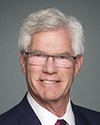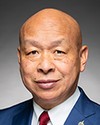My understanding of this particular aspect or phenomenon is that it would likely fall more under the portfolio of the Department of National Defence, which is the branch that would likely have that mandate. The point that I'm really making is that our national security partners look for potential threats to our national security in every dimension, and as they arise we get briefed and we share—
Evidence of meeting #26 for Public Safety and National Security in the 44th Parliament, 1st Session. (The original version is on Parliament’s site, as are the minutes.) The winning word was work.
A recording is available from Parliament.





